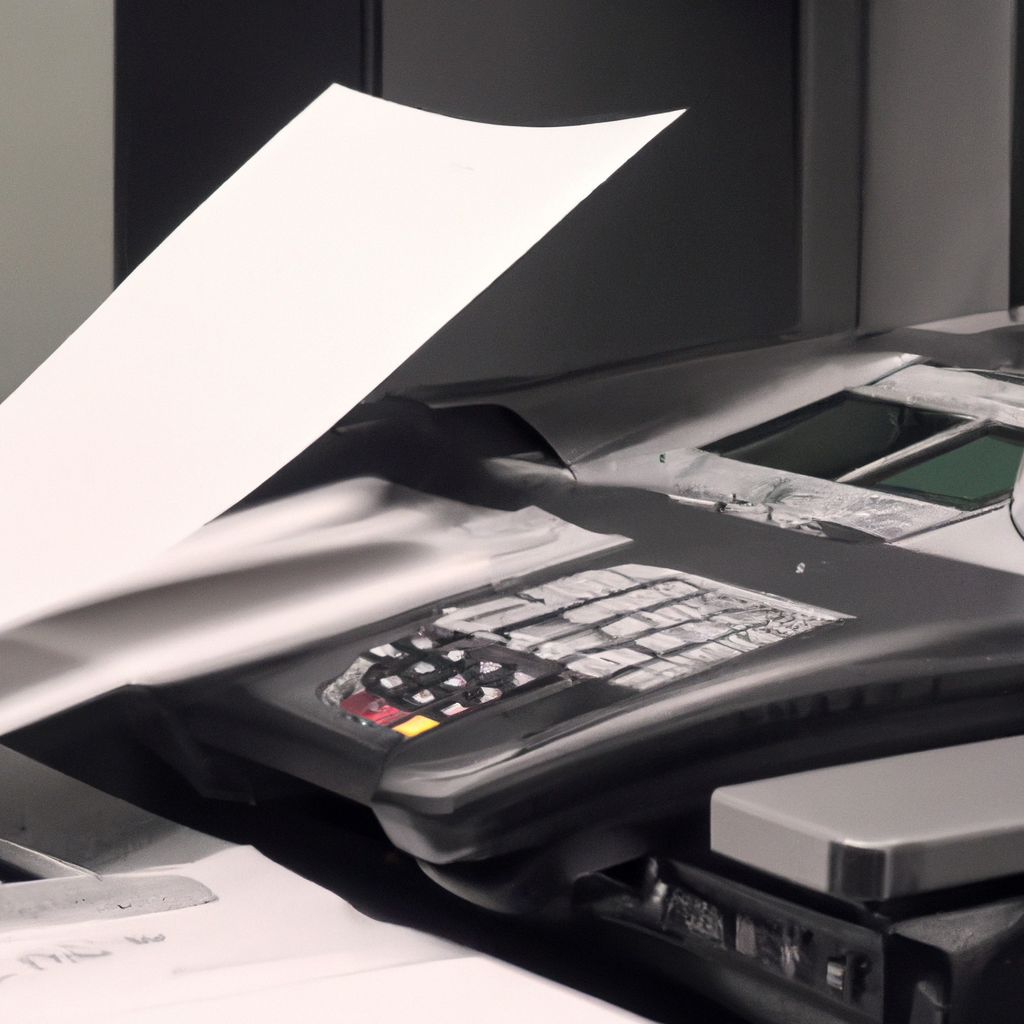Fax machines have been around for decades and are still in use today, despite the rise of digital communication. They remain a reliable and secure means of sending and receiving documents. In this article, we’ll explore how a fax machine works, from sending to receiving a document.
Sending Documents with a Fax Machine
When sending a document through a fax machine, the following steps occur:
1. Scanning the Document – The first step is to scan the document that you want to send. The fax machine reads the document and converts it into a digital image.
2. Converting the Image – The digital image is then converted into a series of black and white dots. This process is called rasterization. The fax machine then compresses the image to reduce the file size.
3. Dialing the Number – Once the document is ready to be sent, the fax machine dials the number of the recipient’s fax machine. This is done by creating an audio signal that is transmitted over the phone line.
4. Establishing a Connection – When the recipient’s fax machine picks up the call, the two machines establish a connection. They exchange information about the type of fax machine and the resolution and compression capabilities.
5. Transmitting the Image – The fax machine then sends the compressed image to the recipient’s fax machine. The image is sent as a series of audio tones that represent the black and white dots.
6. Receiving Confirmation – Once the fax has been sent, the sender’s fax machine waits for confirmation from the recipient’s fax machine. This confirmation is a series of audio tones that indicate that the fax has been received successfully.
Receiving Documents with a Fax Machine
When receiving a document through a fax machine, the following steps occur:
1. Answering the Call – When a fax machine receives a call, it answers the call automatically. It listens for the fax tone, which is a series of audio tones that indicate that a fax is being sent.
2. Establishing a Connection – Once the fax tone is detected, the fax machine establishes a connection with the sending machine. The two machines exchange information about the type of fax machine and the resolution and compression capabilities.
3. Receiving the Image – The sending fax machine then transmits the compressed image to the receiving machine. The image is sent as a series of audio tones that represent the black and white dots.
4. Printing the Document – Once the image has been received, the fax machine prints the document. The document is printed using a thermal printer, which uses heat to transfer the image onto the paper.
Fax Technology
Fax technology has come a long way since the first fax machine was invented in 1843. Today, fax machines use digital technology to send and receive documents. Digital fax machines can store documents electronically and send them over the internet using a protocol called fax over internet protocol (FoIP).
Fax Transmission
Fax transmission speeds vary depending on the quality of the phone line and the resolution of the document being sent. Standard resolution documents can be transmitted in about 10 seconds per page, while high-resolution documents can take up to a minute per page.
Fax Communication
Fax communication is secure because the document is transmitted over a dedicated phone line. This means that the document cannot be intercepted or accessed by unauthorized users. However, it is important to note that fax machines do not encrypt the document, so if the document contains sensitive information, it is recommended to send it through a secure fax service.
In conclusion, fax machines remain a reliable and secure means of sending and receiving documents. They use digital technology to convert documents into a series of black and white dots that are transmitted over a dedicated phone line. While fax technology has come a long way since the first fax machine was invented, it remains an important tool for businesses and individuals alike.







